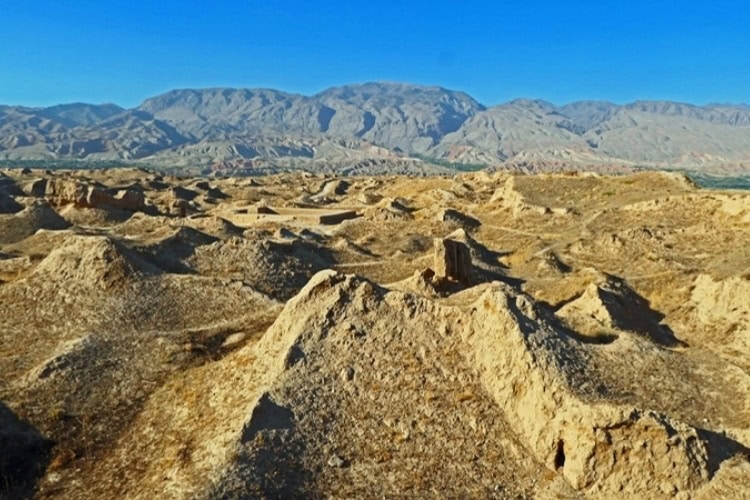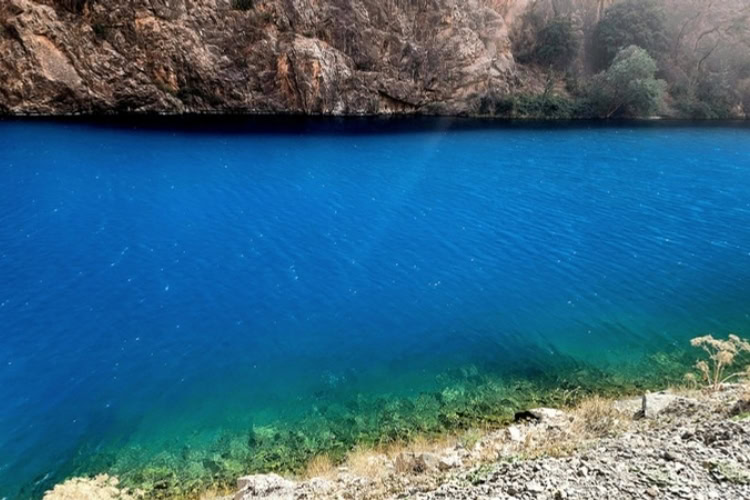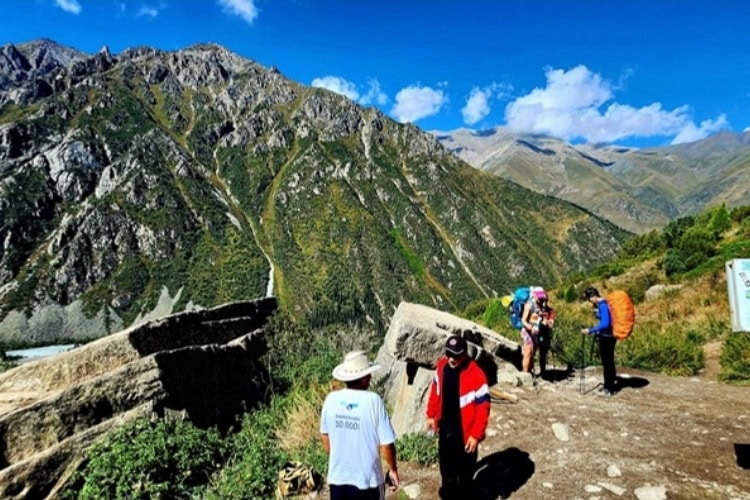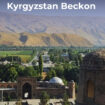
We are reader-supported and may earn a commission on purchases made through links in this article.
Kyrgyzstan and Tajikistan were once at a crossroads of the world, the heartland of great empires from Sogdiana to the Mongols. They were crisscrossed by merchants and traders from many lands who plied the routes of the Silk Road and were a target of the conquering armies of Genghis Khan, Tamerlane, and others.
Today, they are largely forgotten, and their existence is unknown to most people. The legacy of the tumultuous and legendary past has mostly been lost to time, and the elements: few historic buildings, ruins, and the like have survived.
Best Tips & Tools to Plan Your Trip
Exploring Modern and Historic Landscapes
On a recent overland journey in the two countries, I traveled from surprisingly modern main cities with exceptionally grand public works to bucolic high mountain villages with world-class hiking routes.
In between, I discovered that in some historic locations, the past is being reclaimed and restored, creating impressive new tourist sites.
Nowhere has history been more retrieved than in Khujand, Tajikistan. Here, the region’s dynamic legacy—the powerful empires, mighty fortresses, legendary Silk Road routes, and trading hubs—meets the modern world with an impressive new museum, rebuilt ancient bastions, and sprawling bazaar.
A Welcome Surprise in Khujand

My introduction to Khujand was a pleasant surprise: arriving near the city center in a shared taxi (3-4 passengers in a vehicle plying a fixed route is a main transportation system of Central Asia), searching for a taxi to my hotel, a car stops, the driver asks where I’m going and then – his wife and daughter in the back seat ‒ takes me to my lodging and wishes me a great stay in Khujand.
Historical Museum of the Sughd Region
The grand history of Sogdiana – the powerful ancient empire of the Sogdian city-states that endured in Central Asia for more than 1,500 years, with Khujand one of its most important centers and trading hubs ‒ is manifest in the extraordinary Historical Museum of the Sughd Region.
The massive, recently opened complex combines a row of hills with the hardened-mud-and-clay remains of the original 2,500-year-old city, completely reconstructed massive stone walls, towers, and fortress, a large mosque highlighting traditional tile and other artistic works, plus a museum housing collections, dioramas, and displays of archaeological artifacts and historical paraphernalia.
Panjshanbe Bazaar
Khujand is not only one of few sites in Tajikistan and Kyrgyzstan where the storied past truly has been brought back to life but on a monumental scale (though, in their exuberance, they went overboard with the recreation, the ancient bastions so perfectly reconstituted they look like they were built just last week).
Khujand emphatically channels its long-ago Silk Road connection at its Panjshanbe Bazaar, the dazzling central market, the best in Tajikistan, that evokes the city’s storied legacy as a powerful market town.
Ringed by historic structures, including a 14th-century mausoleum of a holy Muslim poet, a 19th-century baked-mud-brick minaret, and the turquoise-domed main mosque, the bazaar is fronted by the huge, bustling, frenetic Registoni Panjshanbe square with its street vendors, children’s rides, and a sea of lingering locals.
The Panjshanbe Bazaar itself, painted in a festive red and white motif, is cavernous with soaring high ceilings and more than 80 columns. Numerous shops sell everything from sports equipment to jewelry, and a riotously colorful market floor offers an exceptional gamut of foods.
The nuts, dried fruits, legumes, herbs, spices, vegetables, meats, and more are so high quality and beautiful to the eye that they look like an AI-generated scene.
Hisor Fortress
Another historic site brought back to life (too exuberantly as well) is Hisor Fortress, not far outside Dushanbe, Tajikistan’s capital. Hisor’s story goes back at least 2,500 years. It was the seat of emperors, emirs, and other rulers over the millennia, and legend has it that at one point it was seized by Alexander the Great.
The fortress was built upon a series of knolls and is said to have been so large that the watchmen would literally ride chariots atop the walls to survey the surrounding terrain for invaders.
While only some mud mounds remain of the original structure, today rebuilt Hisor is again a large complex of high, defensive walls, soaring towers, and gargantuan gateways – with stupendous views from the summit.
Outside the walls are two abandoned historic buildings, a 500-year-old Madrasa, and an 18th-century caravanserai.
The Allure of the Mountains
While history beckons, the main draw for the majority of visitors to Kyrgyzstan and Tajikistan are the pristine, fearsome mountains. Indomitable sierras, imposing crags, and towering peaks dominate the region, especially in Tajikistan, which is 93% mountainous.
Almost 30% of the country is about 10,000 feet or higher, with the highest point at 24,500 feet. The hikers and trekkers come from many countries, some embarking on seriously daunting treks.
A Trek to the Seven Lakes

One of the most enjoyable, eye-popping, and relatively easy hikes is the Seven Lakes: seven alpine tarns, each higher than the previous one, linked by a path that climbs up to more than 8,000 feet – but is overshadowed by surrounding peaks that soar as high as 18,000 feet.
About 40 minutes out of the Tajik town of Panjakent (where the original city, an ancient Sogdian trading hub, is today a sprawling archaeological site), the road became a rutted, rocky, four-wheel-drive track past a series of mud-brick settlements.
Villagers in bright-colored clothing tended flocks and fields, the panoramas an emblazoned palette of intense yellows, oranges, browns, and greens.
Shortly into the four-hour hike, I spied the first lake and immediately understood why the Seven Lakes are a visitor favorite: It was a royal blue of a singular intensity, contrasting with the mostly barren and rocky tan and brown terrain. Each lake was another fierce hue – teal, aquamarine, turquoise.
Each lake poured fast-moving water below that crashed against boulders, sending white spray in the air.
A dozen curious children appeared suddenly, encircled me, and just stared. Farmers were threshing grain with donkey power: six animals harnessed together, led round and round in a circle, their hoofs crushing the crop.

Exploring Arslanbob: The World’s Largest Walnut Forest
One of the most popular hiking destinations in Kyrgyzstan is also home to the world’s largest walnut forest. Arslanbob is watered by countless rushing streams and bubbling-up springs that nurture pines, junipers, wild blueberries, and apples.
Higher up, the landscape becomes treeless slopes of jagged rocks and boulders.
The most popular hike climbs past farms and a small waterfall to a magical lookout spot, the ‘Panoram,’ with spectacular vistas across villages, valleys, and peaks. Then, it goes into the walnut forest and finally makes the long trek to the 265-foot-high ‘Big Waterfall,’ where the final leg is a steep climb through loose scree.
The huge forest is actually divided into thousands of parcels: each family has its own piece of the natural wonder. During the fall harvest, family members typically spend as much as an entire month camping on their plots, gathering nuts.
Local legend says Alex the Great’s men brought walnut trees from here back to Europe.
Local Hospitality and Tourism
As is common in the region’s mountain areas, there are no hotels or restaurants in Arslanbob, only minimalist guest houses that provide ultra-basic lodging, meals, guides, and more.
The hikers, mostly from Western countries, keep coming. “Tourism growth has been strong in recent years, and I believe it will continue,” said Husnidin, proprietor of Friendship Guest House, who is so convinced he is currently adding four additional rooms.
Al-Archa National Park

Al-Archa National Park, less than an hour outside Bishkek, the Kyrgyz capital, is also extremely popular with hikers and mountaineers. Day or overnight hikes climb up to waterfalls, ice fields, and jagged peaks, passing through juniper and spruce forests and a gorge with a rushing river.
A highlight was enjoying brandy, chocolate, and conversation with a local mountaineer, Serge, who was ensconced at Broken Heart Rock, a trail crossroads, sharing his treats with passersby.
The Allure of the Main Cities
The main cities – Bishkek and Osh in Kyrgyzstan and Dushanbe in Tajikistan ‒ are leafy, safe, clean, and pleasant, with many tree-lined streets. The pace is relatively unhurried, with many majestic public buildings and grand statues, parks, fountains, flower-filled esplanades, and gardens.
The numerous benches are invariably filled with people relaxing and conversing.
Russian Influence in the Region
All of the ‘Stans’ were controlled by Russia for some two centuries, first under the Czars and then the Soviets, and Russian influence remains strong. Russian is a lingua franca of the region. In Bishkek, more than 30 years since Kyrgyzstan gained independence, the Soviet aura continues to define the Kyrgyz capital.
The Soviets often built grand public works to promote their image, and Bishkek’s center is still dominated by the trappings of that past era, including large statues of Lenin, Marx, and Engels, a granite obelisk commemorating the Red Guards, the grand State Opera and Ballet Theater, and Revolution Square.
Dushanbe: A Modern and Majestic City
More modern Dushanbe is a majestic and verdant city, a photo gallery of upscale urban life with splendid parks, fountains, and flower beds – plus colored lights everywhere, adorning buildings and wrapped around street lights and fountains, creating a magical scene at night.
Dushanbe’s center is a space designed to provide a genteel, family-focused lifestyle. There are not many places where the focus on family is stronger.
I was rarely asked typical questions like “Where are you from?” Instead, I was repeatedly asked – seemingly by anyone who knew even a few words of English – “Are you married? Do you have children?” Then, I was given an accounting of their children’s names and ages.
Border Crossings and Cultural Differences
Kyrgyzstan and Tajikistan have much in common, yet relations are so bad that their common borders are closed. That forced me to detour through Uzbekistan to travel between the countries. It felt like I was entering North Korea rather than Uzbekistan.
I had to negotiate several controlled areas enclosed in high fences with document checks, guarded by soldiers armed with automatic weapons – all this before I even got to Uzbek passport control!
There, I spent 20 minutes haggling with the obtuse officials who refused me entry; they finally relented after they had their “superiors” review the documentation I had printed from the Uzbek government visa website detailing that I didn’t need one.
What a difference on the other end of the detour: The formalities to enter Tajikistan from Uzbekistan literally would have taken 30 seconds if the smiling, welcoming Tajik border guards had not detained me to go over all the places I “must visit” in their country.
The kind people, rediscovered historic sites, awe-inspiring mountains, and genteel cities made the long journey to Central Asia more than worth it. The biggest payoff, however, may be (I’m hoping anyway) from my Seven Lakes hike.
The local villagers believe those who make it all the way to the final lake, called Hazor Chashma, with its breathtaking views, will find true happiness and bliss. I’m still awaiting my reward.
Inspire your next adventure with our articles below:
- Travel Restrictions, a Warm Welcome and Eye-Opening Experiences in Today’s Libya - June 3, 2025
- Tajikistan and Kyrgyzstan Beckon with Ancient Legends, Modern Cities and Indomitable Mountains - January 10, 2025
- Winging It on Mellow, Undeveloped Tobago - October 5, 2024


